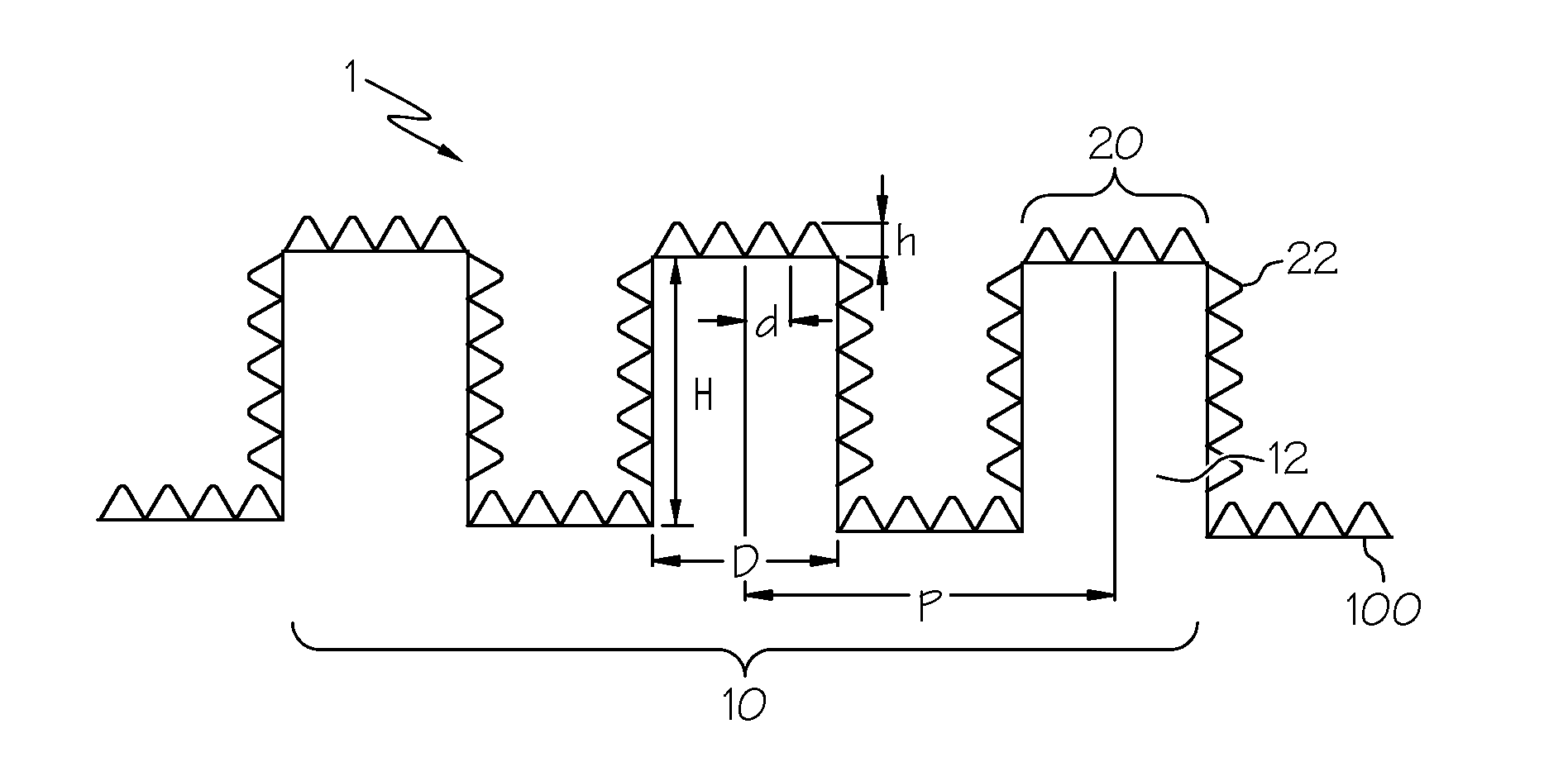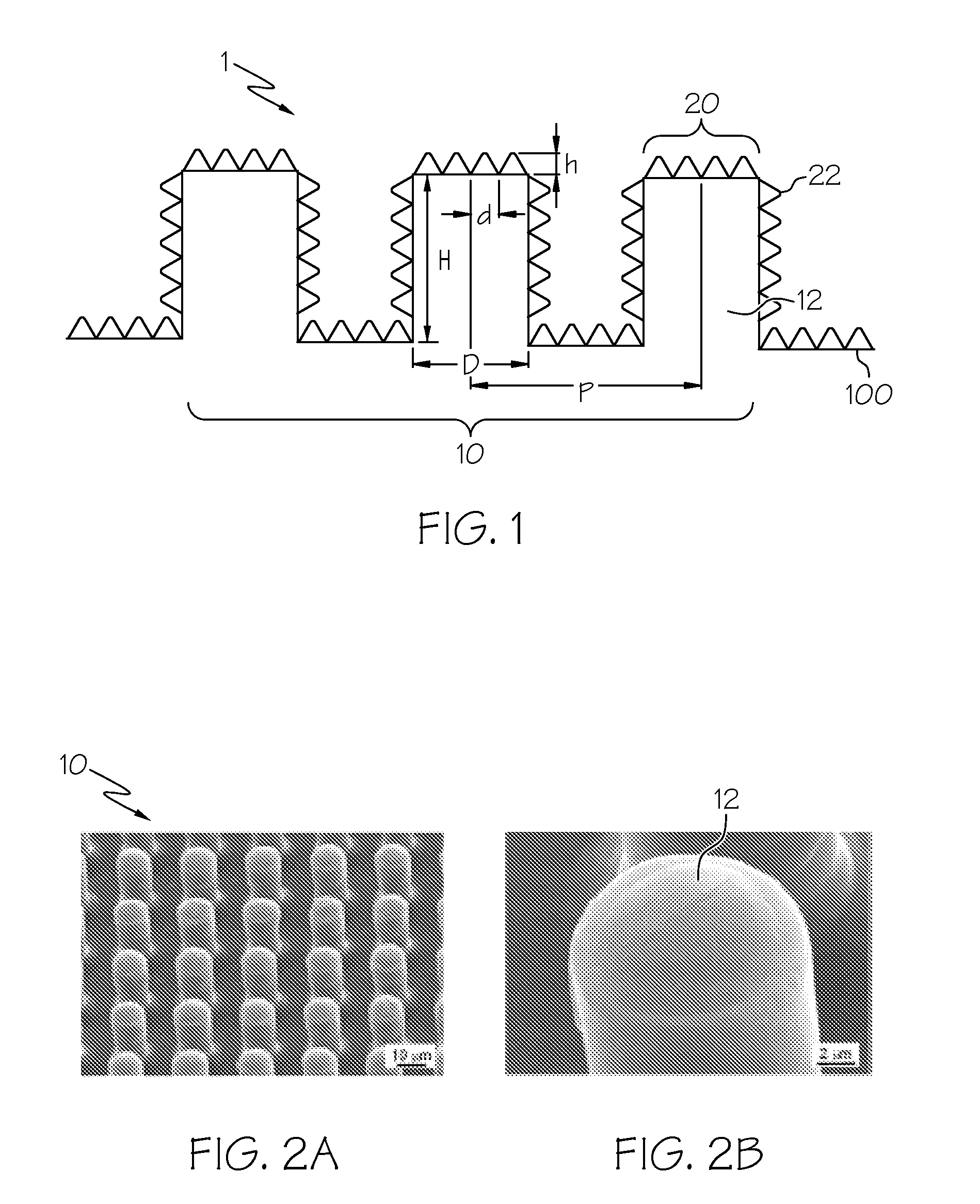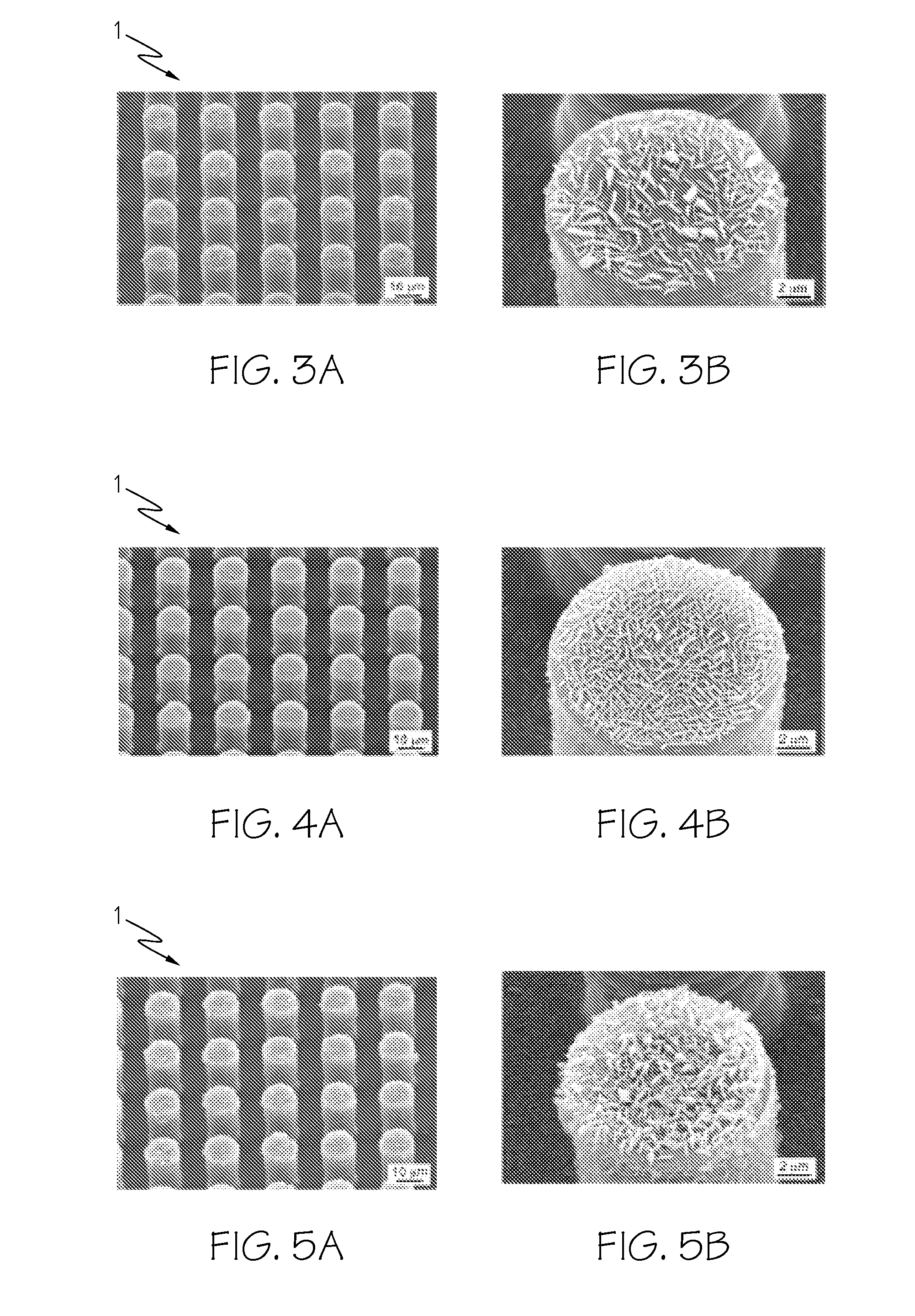Hierarchical structures for superhydrophobic surfaces and methods of making
- Summary
- Abstract
- Description
- Claims
- Application Information
AI Technical Summary
Benefits of technology
Problems solved by technology
Method used
Image
Examples
example 1
[0051]A two-step molding process was used to fabricate the microstructure on a substrate surface, in which at first a negative mold is generated and then a positive mold. As a master template, a Si surface with pillars of 14 pm diameter and 30 pm height with 23 pm pitch, fabricated by photolithography was used. A polyvinylsiloxane dental wax (e.g. President Light Body® Gel manufactured by Coltene Whaledent) was applied via a dispenser on the surface and immediately pressed down with the cap of a Petri dish or with a glass plate. After complete hardening of the molding mass (at room temperature for approximately 5 minutes), the silicon master surface and the mold (negative) were separated. After a relaxation time of 30 minutes for the molding material, the negative replicas were filled up with a liquid epoxy resin (e.g., Epoxydharz L® manufactured by Conrad Electronics) with hardener (e.g., Harter S, Nr 236365 manufactured by Conrad Electronics). The liquid epoxy resin was added near...
example 2
[0053]For nanostructures of Tropaeolum wax, two different experimental conditions, after storage at 50° C. with and without ethanol vapor, were used to identify optimized structures. FIGS. 7A and 7B is an SEM micrograph illustrating a hierarchical structure fabricated with 0.8 μg / mm2 of Tropaeolum wax after storage at 50° C. with ethanol vapor, whereas FIGS. 8A and 8B illustrate a hierarchical structure fabricated with 0.8 μg / mm2 of Tropaeolum wax after storage at 50° C. without ethanol vapor. When comparing the SEM images of FIG. 7B to 8B, the presence of ethanol vapor yields an increase in tubules on flat and microstructure surfaces after deposition of tropaeolum wax. The formation of tubules requires mobility of wax molecules on the surface, which is provided at least in part by the solvent (e.g., the ethanol vapor).
example 3
[0054]Unlike Tropaeolum wax as described in Example 2, crystal growth of Leymus wax was not found on the surface after storage at 50° C. with ethanol vapor. However, chloroform solution yielded increased molecule mobility, and thus increased mobility of Leymus wax. FIGS. 9A and 9B are SEM images illustrating the hierarchical structure fabricated with a mass of 0.8 μg / mm2 of Leymus wax after storage at 50° C. with chloroform vapor. An increase in tubule length was found after deposition of higher wax mass. The higher mass of deposited wax led to an increase in the amount of tubules with a more up right orientation. The tubular crystals were randomly orientated on the surface and embedded into an amorphous wax layer, and may be two to five times longer than the tubules of Tropaeolum wax. For example, the leymus wax tubules may comprise a tubular diameter of may vary between about 200 to about 300 nm, and a length between about 1500 to about 4000 nm.
PUM
| Property | Measurement | Unit |
|---|---|---|
| Length | aaaaa | aaaaa |
| Length | aaaaa | aaaaa |
| Length | aaaaa | aaaaa |
Abstract
Description
Claims
Application Information
 Login to View More
Login to View More - R&D
- Intellectual Property
- Life Sciences
- Materials
- Tech Scout
- Unparalleled Data Quality
- Higher Quality Content
- 60% Fewer Hallucinations
Browse by: Latest US Patents, China's latest patents, Technical Efficacy Thesaurus, Application Domain, Technology Topic, Popular Technical Reports.
© 2025 PatSnap. All rights reserved.Legal|Privacy policy|Modern Slavery Act Transparency Statement|Sitemap|About US| Contact US: help@patsnap.com



